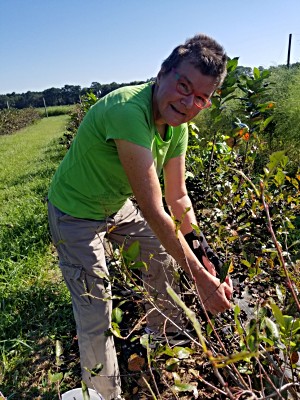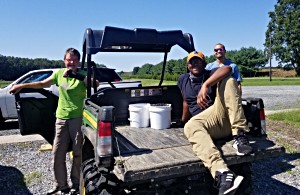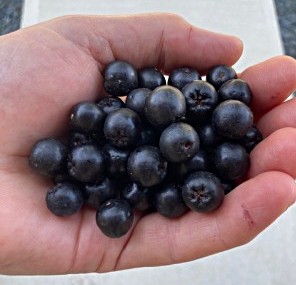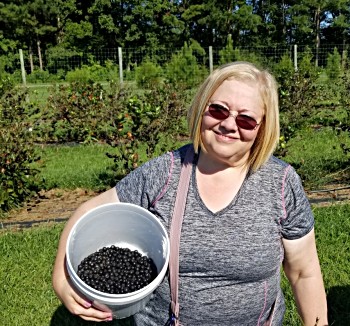
UMES chemistry professor, Dr. Victoria Volkis, has conducted aronia research slightly over a decade in partnership with Dr. Andrew Ristvey, an extension specialist for commercial horticulture at Wye Research and Education Center in Queenstown, Md. Four years ago, they enlisted the help of extension specialists with UMES’ Small Farm Program to grow aronia on the UMES Research and Education Farm on Stewart Neck Road in Princess Anne.
“We planted some bushes with wider distances between rows so that it would be convenient for demonstrations to farmers and students and in anticipation of future machine harvesting,” Volkis said.
Volkis, as principal investigator for the U.S. Department of Agriculture, National Institute of Food and Agriculture’s Research and Extension Experience for Undergraduates summer internship at UMES, uses the farm’s aronia plot as a demonstration and study site for student projects. Aronia from UMES plants are also used by Volkis’ research group for antifouling research for a U.S. Navy project she leads as the Navy’s Minority Serving Institution Distinguished Faculty Fellow (2021-24) and in developing aronia power drinks. In collaboration with Dr. Simon Zebelo, an entomologist at UMES, Volkis is studying the use of aronia pulp for pest control.
On a recent trip to the farm, Volkis and students Keith Bratley, Teemer Barry and Riham Alhad along with UMES Extension specialists, Henriette den Ouden (specialty herbs consultant) and Dr. Nadine Burton (alternative crop specialist) picked 53 pounds of berries. Community members have stopped by the farm and picked approximately 30 pounds.
“The harvest from the berries at UMES definitely exceeded our expectations,” den Ouden said. “Aronia is easy to grow as it does well in a variety of soils and requires sun, but will tolerate partial sun. Irrigation is recommended for dry periods and for first year plants. Also, keep weeds away from young plants by using a ground cover or straw. It’s a fun berry to grow in your backyard with the added advantage of pretty flowers in the spring as a member of the rose family.”
For commercial growers, they suggest connecting with UMES’ Small Farm Program before buying plants.
“Aronia is a native plant and native plants generally are used as a food source for a wide variety of insects and animals, so be aware that it is vulnerable,” den Ouden said. “There are organic and non-organic pesticides on the market to prevent most damage. If your environment has a deer problem, definitely start with fencing in your area.”
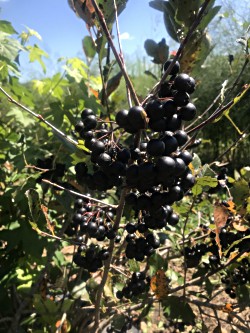
Reaping the benefits of your cultivation efforts is potentially challenging, she said.
“Prepare for labor intensive picking August through September. Harvesting machines are available, but can be cost prohibitive. Additionally, have your plan ready for the harvest. The berries taste slightly sour and astringent and can’t be sold as easily as blueberries or cherries. Use the first limited harvest to create a product and marketing plan.”
Volkis, who was born in Russia before immigrating to Israel, makes wine from aronia berries with a recipe she inherited from her father.
“There are many recipes with aronia as an ingredient, particularly wine,” Volkis said. “Many farmers compete with each other for their recipe to be the best.”
For more information on educational and research activities at the UMES Research and Education Farm, contact Dr. Nadine Burton at nmburton@umes.edu.
Gail Stephens, agricultural communications, University of Maryland Eastern Shore, School of Agricultural and Natural Sciences, gcstephens@umes.edu, 410-621-3850.
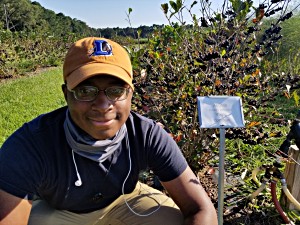
involved in Volkis’ research lab with aronia.
